Move Baby Move
Week 13

Congratulations, you are now entering your second trimester! Your baby’s amazing growth and development continues. The intestines that were once housed in your baby’s umbilical cord have now entered the abdomen. Urine is now being produced by your baby and excreted into the amniotic fluid. Developing inside your baby’s extremities and surrounding his or her baby’s head is tissue that will grow to be bone. Miniature ribs may be seen.
Your baby is measuring about the size of a plump nectarine. Your baby’s head takes up about half of his or her total length.
Week 14
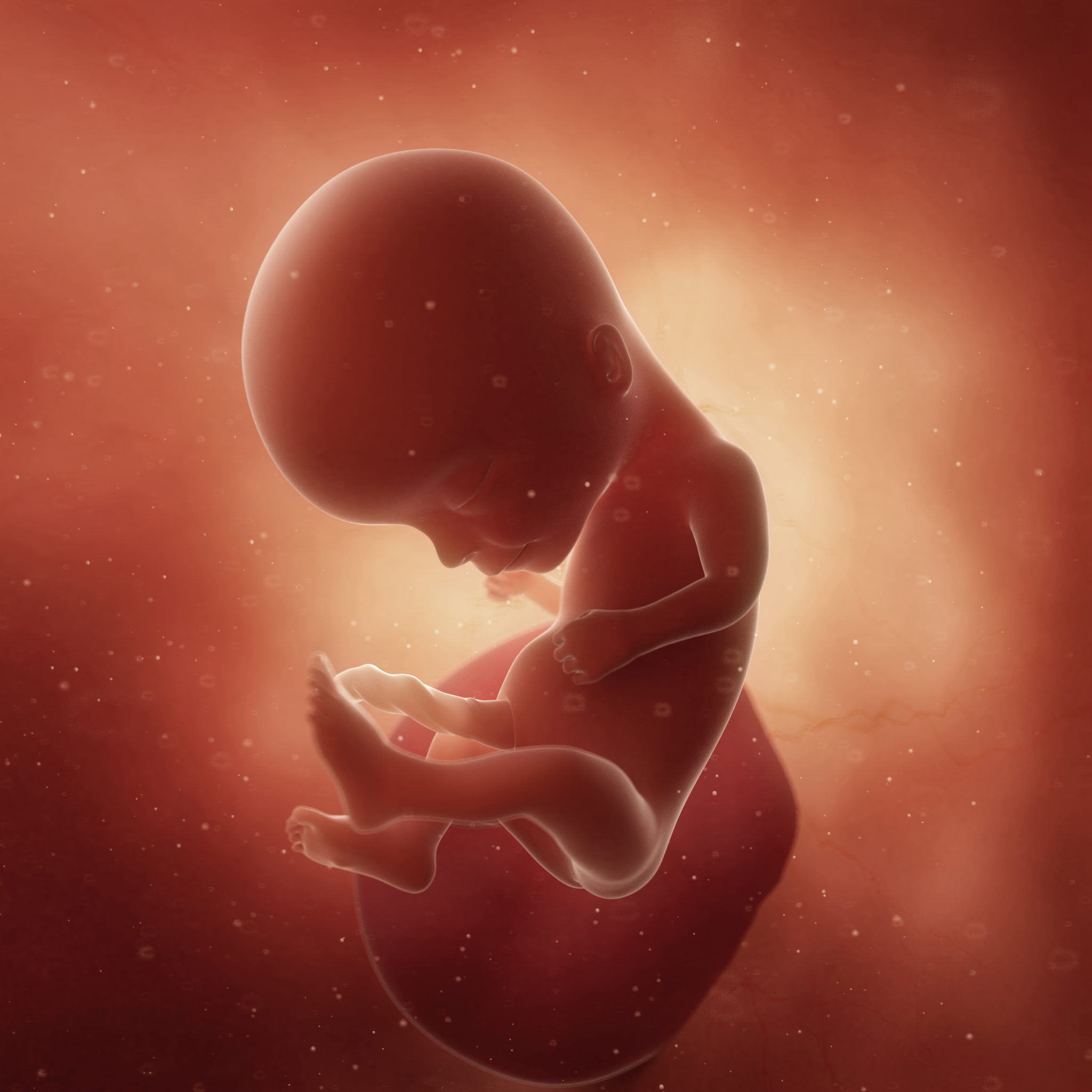
Impressively, your baby’s arms are nearly the length they will be on delivery day. The natural contour of your baby’s neck area is emerging; the spleen is diligently creating red blood cells. If the sex of your baby is not obvious at this time on an ultrasound there’s no need to worry because it will be in the very near future. Ovarian follicles are now developing and moving from the abdominal area into the pelvic area in girls, while the prostate is developing and becoming visible in the boys.
The roof of the mouth is complete. A covering of body hair, lanugo, is developing and may provide your baby with warmth until fat increases. Lanugo will disappear by delivery day.
By the time your baby’s birthday arrives, his or her head will have quadrupled the present size. Now nearly 3½ inches long, about the size of a large McIntosh apple, your baby weighs about 1½ ounces.
Week 15

Your baby’s skeleton is busy amassing bones visible at your Week 20 ultrasound. The outline of your baby’s hair and eyebrows are evident. The pigments that color your baby’s hair are now being produced. The skin is exceptionally fragile and maturing at this time.
Your baby is probably about 4½ inches from head to rump, about the size of a sweet Vidalia onion, and weighs only 2 to 3 ounces in your fifteenth week of pregnancy.
Week 16
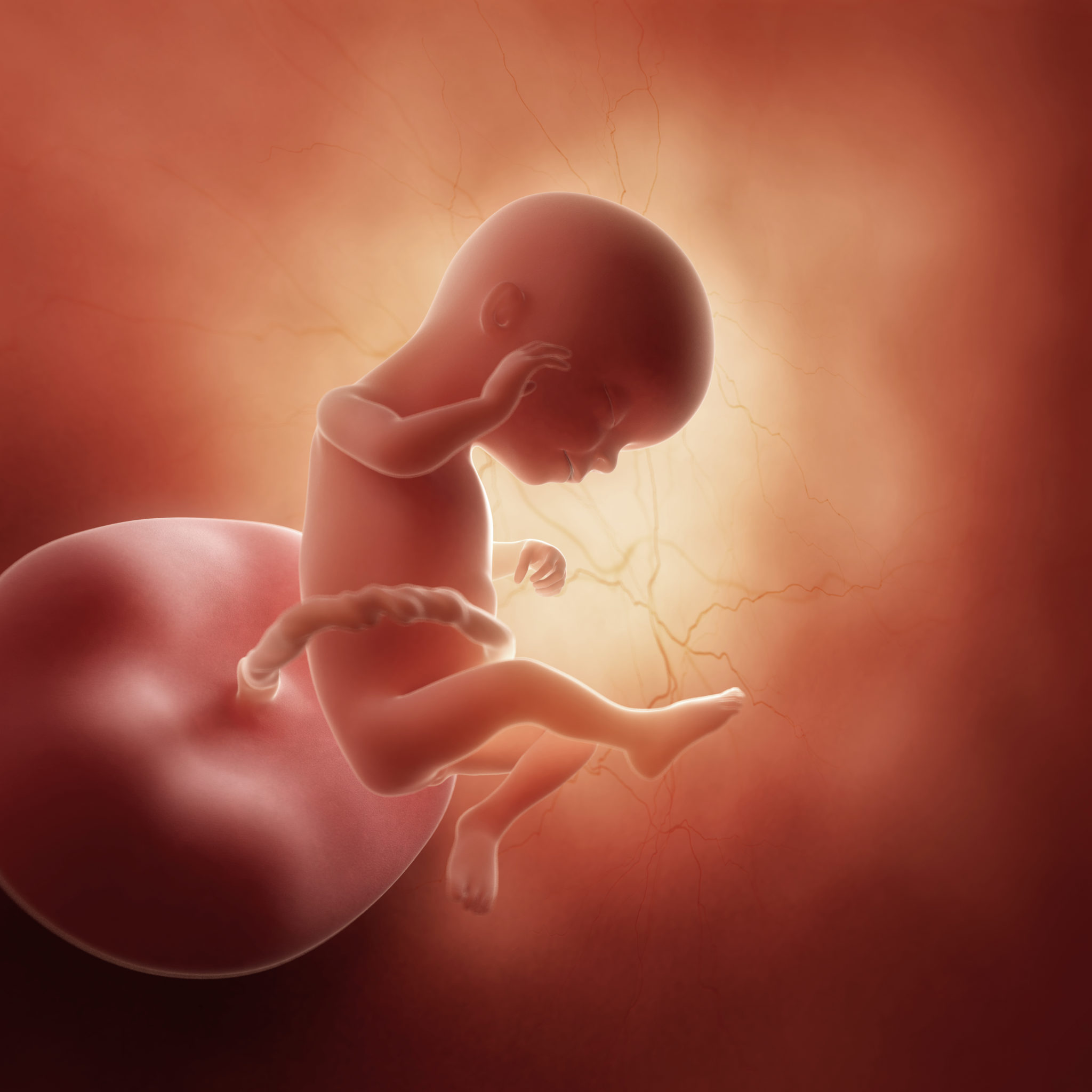
Your baby’s ears are now in their permanent location. Tiny eyes, complete with eyelashes, are now facing straight ahead. While your baby’s eyes do not open at this time, they can move from left to right and see light. Little hiccups may now become a part of your baby’s experience in utero this week.
You will not be able to feel your baby’s movements at this time although they are becoming synchronized due to the connections between the skeletal and nervous systems. If you have an ultrasound assessment at this time, your baby’s movements will be easily identified. As your baby’s reflexes strengthen, the facial muscles enable peeking, defiant stares and possibly sucking motions that are the beginning of the sucking reflex needed on delivery day for nursing.
If you are having a baby girl, she continues developing millions of tiny eggs this week within her petite ovaries that will allow her to become a “mom” herself one day.
Your baby is now the size of the perfect avocado and just a little more than 4½ inches long.
Week 17

This week the branching of delicate airways in your baby’s lungs is now complete. From now through Week 20, your baby’s tiny lungs are getting ready to receive oxygen. You may now possibly feel the little hiccups that began just last week.
Your baby is starting to accumulate brown fat beneath the skin. Extra layers of fat will increase in the weeks to come. Brown fat will keep your baby at the perfect post birth temperature on delivery day.
Your baby is 4½ to 5½ inches long, about the size of a large juicy peach.
Week 18
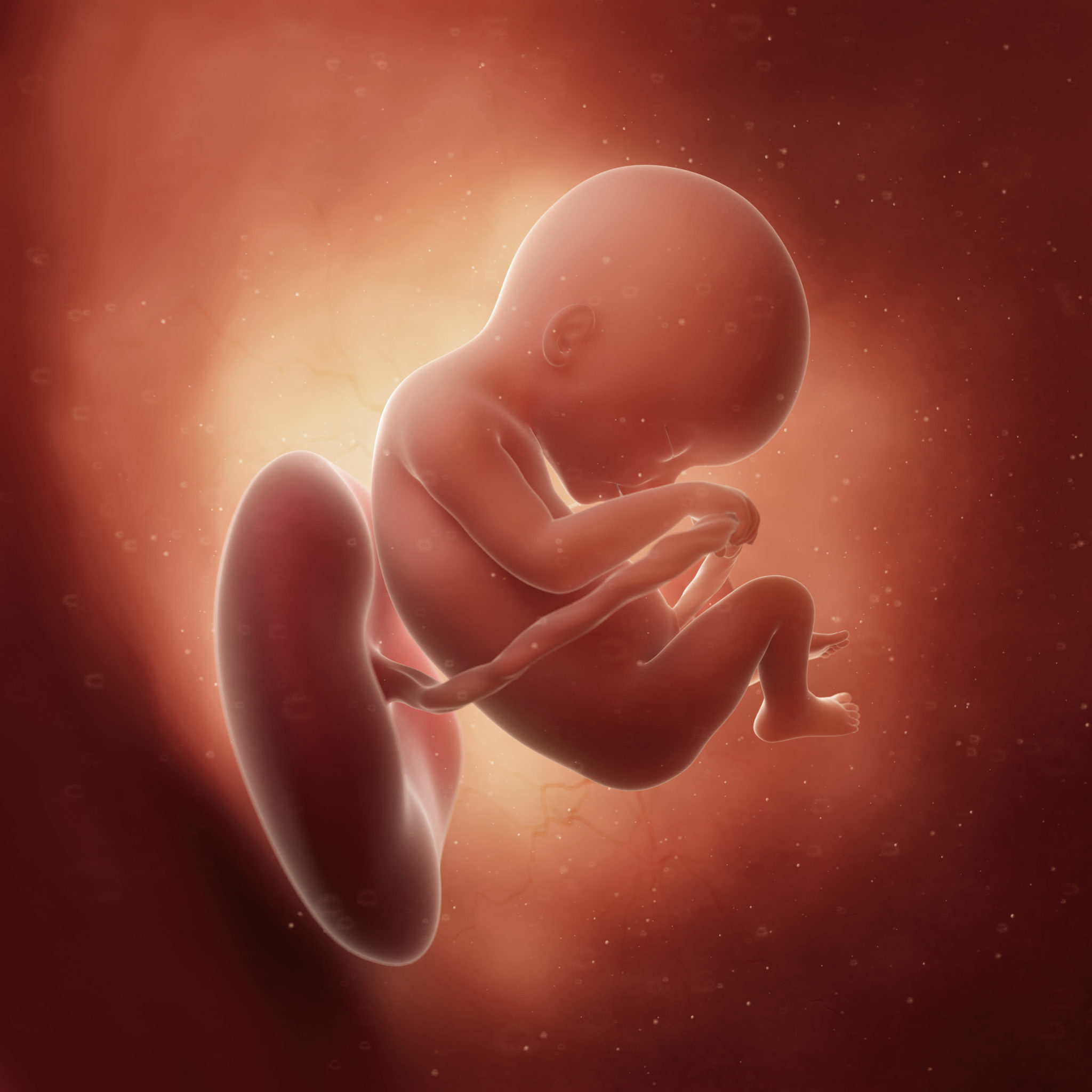
Your baby’s ears protrude from a tiny head as inner ear bones (as well as leg bones) begin to solidify. The skeleton will keep ossifying. Your baby will hear and acknowledge the raucous environment of your uterus, your tummy echoing, blood whizzing through your vessels and the rhythm of your heart beating. Your baby will also become aware of loud noises outside the womb.
Your baby is roughly 5½ inches in length, 7 ounces in weight and about the size of a delicious naval orange.
Week 19

Your baby may now be sucking a tiny thumb, shifting a little head or creating other diminutive movements that you may begin to sense. Your voice, speaking, humming and crooning, is the most pronounced sound your baby is now hearing.
Your baby is now jacketed in lanugo, which may hold in place the polished coating of vernix caseosa now encasing the lanugo. Although amniotic fluid will protect your baby from bangs and bumps, the vernix caseosa aids in protecting fragile skin from scrapes and chaffing that may occur from immersion in the amniotic fluid.
Small kidneys expel urine into the amniotic environment. The placenta is actively working to eliminate waste products. The vagina and uterus may begin developing in baby girls.
Your baby is about 6 inches long and the size of a shiny green zucchini.
Week 20

Wow, you are now halfway through your pregnancy! You may start to feel your baby move as his or her tiny limbs are now nicely defined and freely in motion. Your baby’s first little movements, those flutters, are also known as quickening. This is a very important milestone. Make sure you jot this exciting achievement down and inform your health care team at your next visit.
Under the vernix, sheets of skin are beginning to build and unify as your baby’s skin is maturing. Tiny nails and subtle wisps of hair are coming into sight. Your baby now weighs about 8 ounces and is 6 inches long, the length of a yellow summer squash.
Week 21
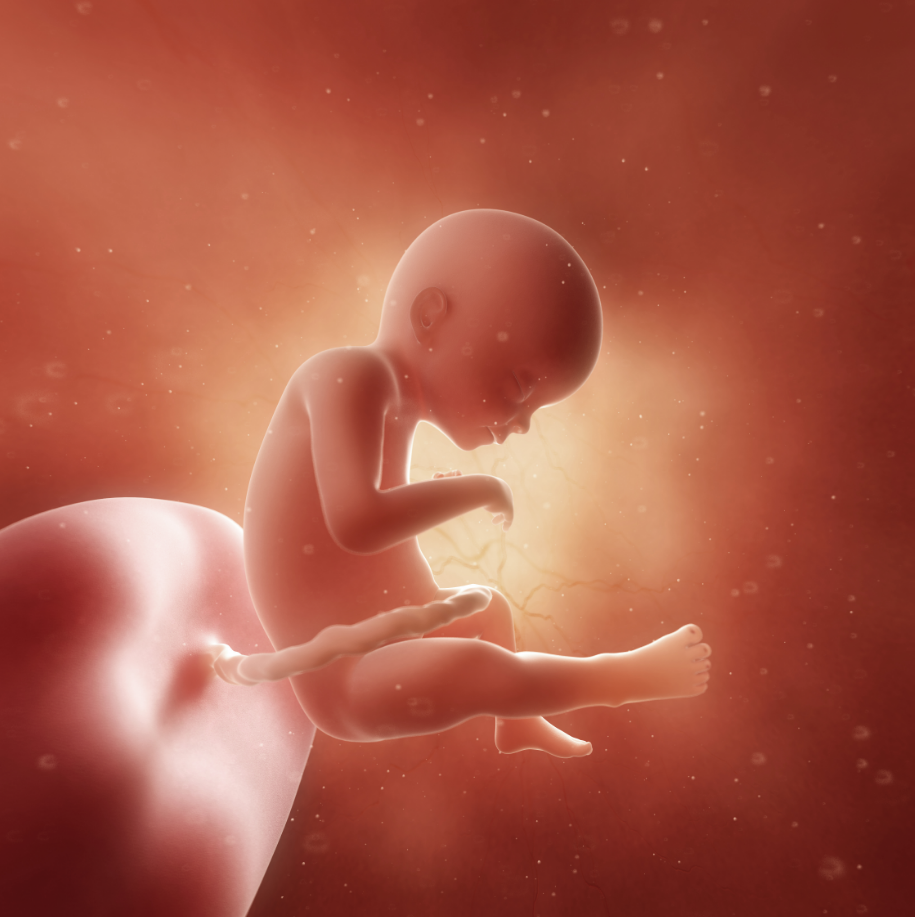
Your baby’s is staying awake longer and you will most likely notice increased activity. All of your baby’s main systems have matured and are working in preparation for sustaining a healthy baby on delivery day.
Swallowing, taste buds forming, and a sense of taste may start this week. Sugars pass through the digestive system and tiny amounts in the amniotic fluid provide sustenance. As your baby experiences the flavor of your diet present in the amniotic fluid, the most important nourishment and nutrition is being supplied via the placenta and umbilical cord.
Your baby’s bone marrow produces blood cells. Little arms and legs are balanced and movements are in sync, as brain neurons have cultivated stronger muscles.
Your baby will weigh about 11 ounces and measure about 7 inches, the length of a rich orange carrot.
Week 22

The beginnings of tiny eyebrows start to appear. The once smooth surface of your baby’s brain now contains folds. This process finishes maturing at Week 34 and allows the outer portion of the brain the space it needs to accommodate a complete allowance of brain cells.
The senses of taste and touch are increasing as your baby’s brain and nerve endings develop. Your baby is enjoying a new world with his or her newly perceived sense of touch. Your baby’s expanding sense of hearing will allow him or her to recognize your voice and other sounds outside your womb.
Your baby is now 7½ inches long and weighs about one pound, the size of a ripe cantaloupe.
Week 23
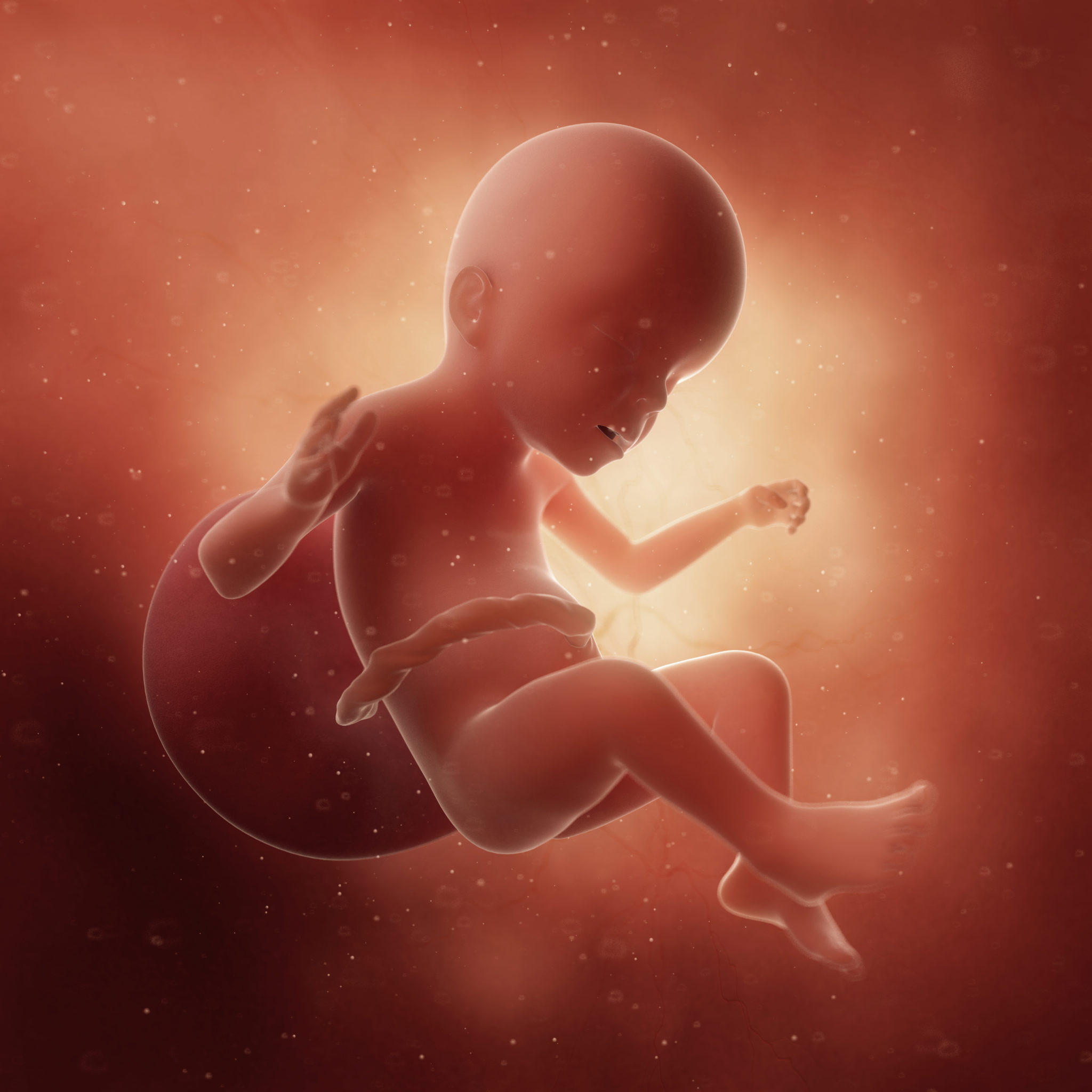
You will now be enjoying the fact you are over half way through your pregnancy! In little girls the ovaries, now containing a lifetime’s worth of eggs, are in place along with the uterus; the vagina matures. The reproductive system is also unfolding and maturing in little boys as the testes commence their descent.
With baby fat being lean, your baby’s skin is wrinkly with see-through skin tones of light pink to deep garnet. Your baby experiences the onset of rapid eye movements. The beginnings of little footprints and fingerprints begin this week that will be inked, stamped and printed for a lifetime of safety and identity on delivery day.
Your baby is now beginning to concentrate on taking his or her first breath. Little lungs and the blood vessels housed within them are growing quickly this week anticipating delivery day. The placenta continues to deliver adequate oxygen to your baby during this time.
Weighing barely over a pound and the size of a large grapefruit, did you know that babies delivered this week in the right high-tech medical setting may survive?
Week 24

Your baby’s balance is regulated by the inner ear that has now matured. Your baby may recognize a new sense of balance this week knowing that he or she is heads up or heads down. As your baby becomes increasingly more energetic, you will begin to see a pattern of baby’s slumber and wake cycles developing. Remember, to keep track of your baby’s movements and patterns in your journal, noting any increase, decrease or change in activity. Your baby’s movements fuel muscle development, encourage joint mobility and fortify tiny bones.
Your baby’s little face is nearly finished developing in preparation for delivery day. The head now has actual hair peeking through and little eyelashes adorn tiny eyes.
Gaining just a little under a half a pound a week, your baby measures 8 inches in length, about the length of a crisp stalk of celery, and weighs about 1½ pounds.
Week 25
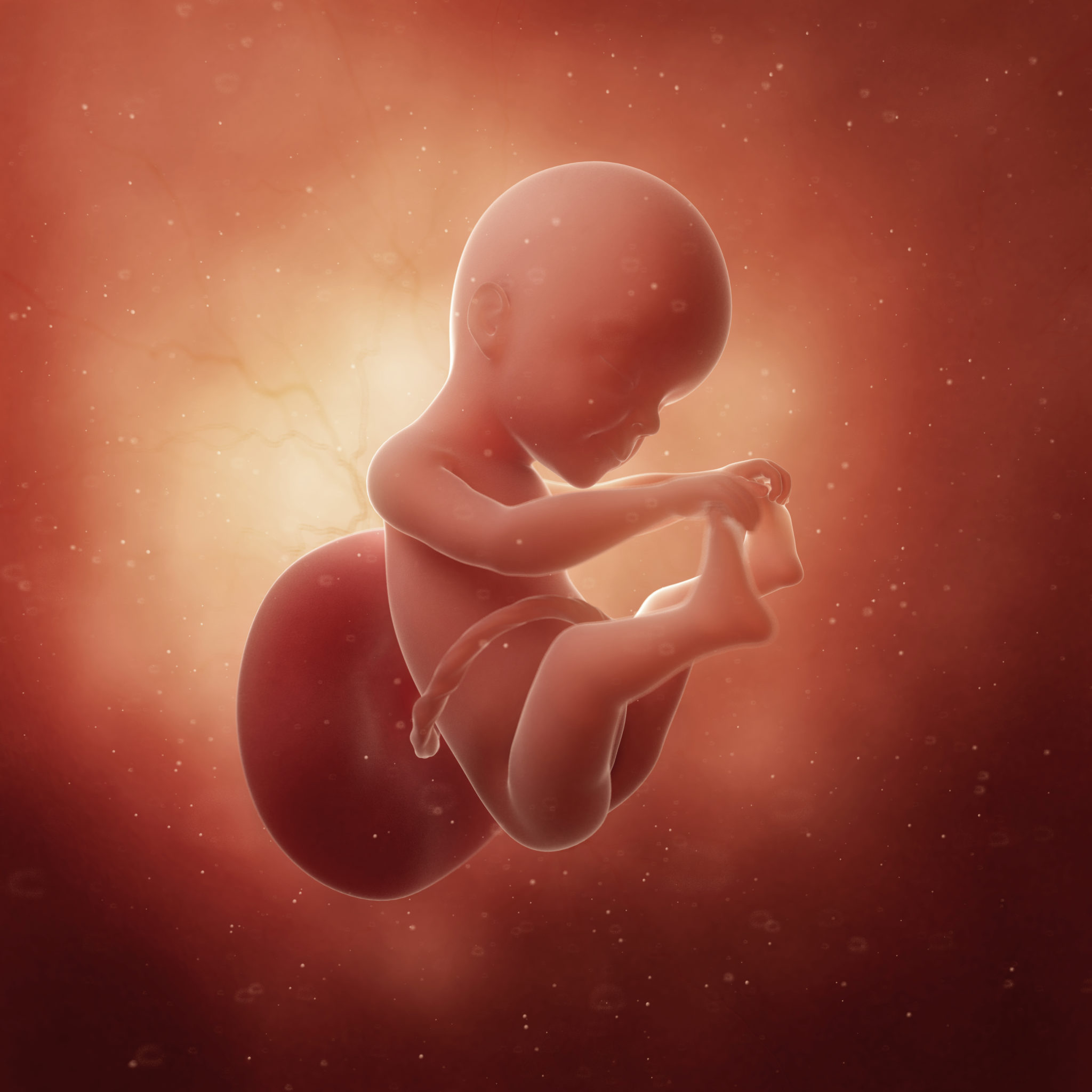
Your baby may now recognize sounds such as your voice and respond with a little shifting of position. Tiny hands continue to develop synchronizing skills; opening and closing little hands can now be accomplished as the nerves in your baby’s hands are developing every day. The startle reflex is emerging.
Your little one is performing cartwheels and twirls; investigating the surroundings of the uterus will be part of your baby’s daily routine. Kicking begins as the muscles in tiny legs have matured. In just a couple of weeks you will begin counting your baby’s movements every day. This proactive step, making sure your baby’s movements remain the same from day to day, will help let you and your health care team know that your baby is doing well in utero.
Your baby is now the length of a small sweet honeydew melon weighing about 1½ pounds.
Week 26

Your baby’s eyes have now fully matured. Surrounded by eyebrows and eyelashes, in just two short weeks these little eyes will begin seeing his or her surroundings. Your baby’s very own distinctive facial characteristics and bodily traits are appearing. Tiny fingernails are in place. Under baby’s skin, vital fats continue to build up.
The immature lungs are preparing for a vigorous and healthy delivery day by manufacturing surfactant which enables them to fill with air and let the air out; this substance will also make sure that the lungs do not disintegrate or fuse together when your baby’s first breaths are taken on delivery day. Your baby will begin preparing for delivery day around this time by making attempts to take tiny breaths.
Your baby is now 9 inches long and 2 pounds, of size of a ripe pineapple.
Week 27

Yes! The end of the second trimester is here. Your baby’s lungs and liver continue developing along with his or her immune and nervous systems. Familiar voices in your baby’s world are now recognizable.
You will notice the movements of your baby continuing to increase. Get ready for counting movements beginning around Week 28.
Your baby has now grown three times in size since Week 12. Steadily developing, maturing and thriving in utero, your baby now weighs about 2 pounds.